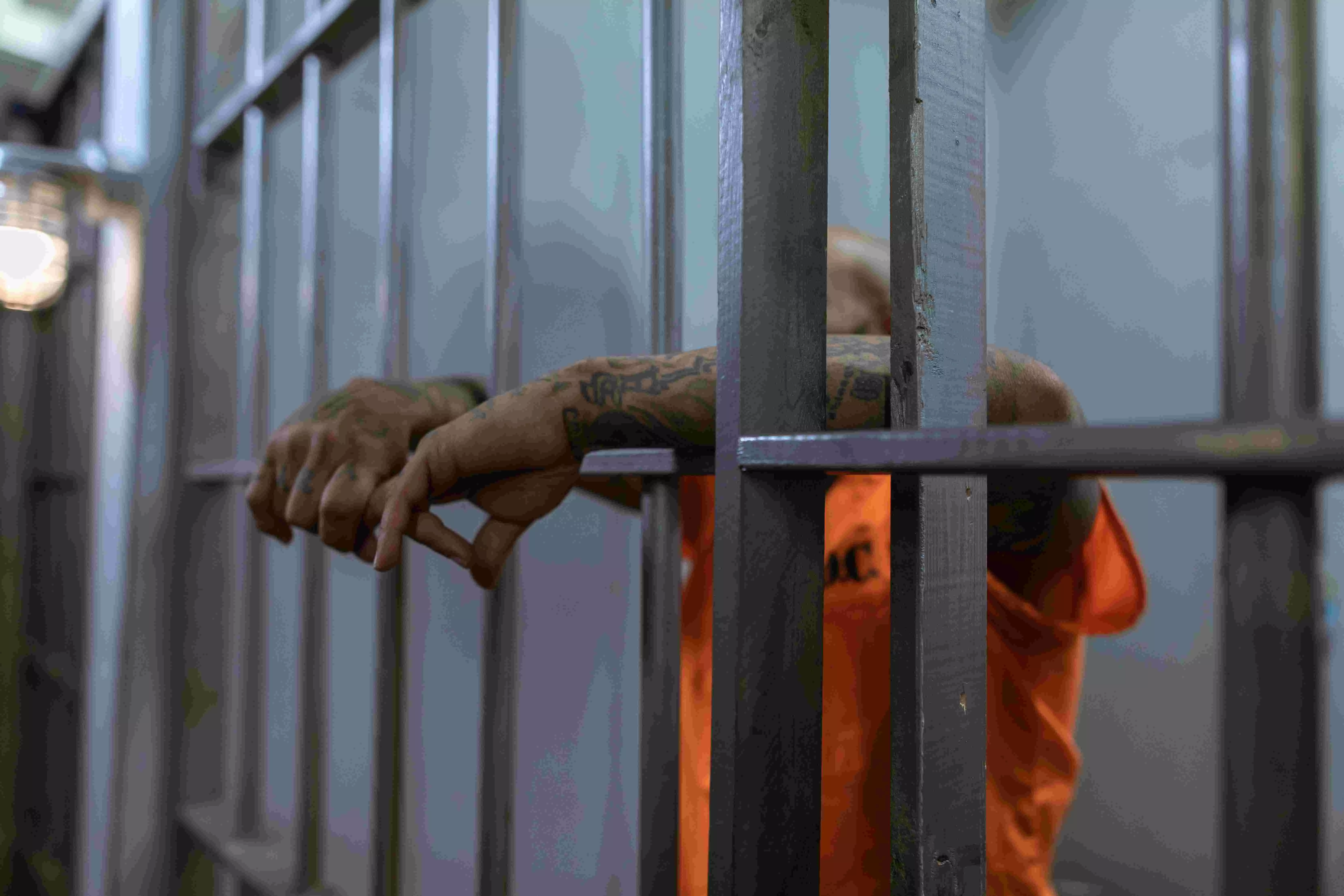The Prison Economy
What began as a state function of justice has become a lucrative enterprise. The global prison-industrial complex now spans continents and corporations, converting confinement into profit and turning incarceration into one of the most sustained growth stories of our time

Governments worldwide spend hundreds of billions annually to keep millions of people behind bars. In many countries, private corporations have joined the ‘prison-industrial complex’ (PIC) and earn profit from incarceration. In his seminal piece, ‘Jailing Americans for Profit: The Rise of the Prison Industrial Complex’, John Whitehead (2012), wrote: ‘In an age when freedom is fast becoming the exception rather than the rule, imprisoning Americans in private prisons, run by mega-corporations, has turned into a cash cow for big business’ Bianca Tylek (2025), in her new book “The Prison Industry: How It Works and Who Profits.” reveals that the Prison Industry organizes these private corporations into 12 sectors: telecom, health care, management and operations, community corrections, food and commissary, programs and labour, financial services, architecture and construction, equipment, investors, personnel, and transportation. Over the years, the private corporations have created a huge and expansive web of the prison industry, which now exceeds the GDP of many nations. A few such corporations are: GEO Group (formerly Wackenhut Corrections), Wellpath (formerly Correct Care Solutions), Vista Outdoor, Deutsche Telekom, and TKC Holdings.
Global Prison Trends
As per the Global Prison Trends 2025 report, there are an estimated 11.5 million people held in prisons worldwide, and over the past 25 years, the global prison population has increased by 27 per cent. South America has seen a record surge of 224 per cent, while Oceania’s prison population has risen by 85 per cent (due to rises in Australia and New Zealand). Women account for about 6.8 per cent of the prison population and is growing at a much faster rate than that of men – up by 57 per cent since 2000, compared to a 22 per cent increase for men. Approximately one-third of the global prison population is held in pre-trial detention – totalling 3.5 million people – presumed innocent. In South Asia, almost 63 per cent of the sub-regions’ prison population is held without being sentenced.
It is estimated that about 12.5 million people worldwide are under a non-custodial measure or sanction. This is slightly larger than the global prison population. The underutilisation of non-custodial options in the global south is one key driver of high rates of pre-trial detention and prison sentences. Europe is the only region where prison numbers have declined since 2000, a trend largely driven by Russia, which has seen a significant 59 per cent drop in its prison population. In Europe, the number of people under non-custodial measures or sanctions has remained stable in recent years, and the latest data show that in 23 out of 30 jurisdictions, more people are under probation than in prison.
Governments worldwide spend hundreds of billions annually to keep more than 11.5 million people behind bars — mostly men. The exact global cost is unclear, but in the United States alone — the world’s biggest jailer — the prison budget is USD 80.7 billion per year, versus Brazil at around USD 4 billion. India, with the world’s fourth-largest prison population, spends nearly USD 1 billion, reports DW.
USA Leads the Prison Industry
According to a new report from the American Civil Liberties Union (ACLU), in 2022, imprisoned workers in the US produced at least USD 11 billion in goods and services annually but received just pennies an hour in wages for their prison jobs. Nearly two-thirds of all prisoners in the US have jobs in state and federal prisons. That figure amounts to roughly 8,00,000 people. The prison economy survives on forced prison labour. From fighting wildfires to toiling in the kitchens of some of the country’s most popular food franchises, incarcerated workers perform vital functions across the United States and produce billions of dollars in value for the public and private sectors. This reliance on free and underpaid labour is consistent with the racist and anti-worker economic development model followed in the Western capitalist economies.
Historically, the United States administration ranks among the highest worldwide in its dependence on detention. Over five million people in total are under supervision by the criminal legal system. Of these, nearly two million people, disproportionately Black, are living in prisons and jails instead of their communities. In the early 1970s, this count was only 3,60,000. In 1972, the imprisonment rate was 93 per 1,00,000 people, which has increased to 531 in 2022 - nearly a sixfold increase in five decades. The US prison-related data reveal that the total U.S. government expenses on public prisons and jails exceed USD 80.7 billion, expenses on private prisons and jails were over USD 3.9 billion in 2022, and the number of companies that profit from mass incarceration is around 4,000. Here are a few major US corporations engaged in the prison industry.
CoreCivic Inc., formerly the Corrections Corporation of America, is the world’s largest private prison company that owns, leases, and operates prisons, jails, including immigration jails, and residential re-entry centres in the United States. As of 2023, it operates 43 prisons and jails, 39 of which it owns, with a total capacity of 65,000 beds. In 2023, CoreCivic generated 52 per cent of its annual revenue from federal prison and immigration authorities, including primarily U.S. Immigration and Customs Enforcement (ICE), the U.S. Marshals Service (USMS), and the Federal Bureau of Prisons (BOP). Its annual revenue for the full year 2024 was approximately USD 2.0 billion.
The GEO Group, Inc. (GEO) is a publicly traded C corporation headquartered in Boca Raton, Florida, that invests in private prisons and mental health facilities in the United States, Australia, South Africa, and the United Kingdom. The company’s facilities include immigration detention centers, minimum security detention centers, and mental-health and residential-treatment facilities. As of September 30, 2024, the company owned or managed 80,000 beds at 99 facilities, making it one of the largest prison operators in the United States. GEO Group reported Q3 2025 revenue of USD 682.3 million, a 13.1 per cent increase from USD 603.1 million in the same period last year.
Donald Trump’s second term as the US President and his strict immigration crackdown is providing a lucrative income for the private prison industry. More than 60,000 people were being detained by Immigration and Customs Enforcement (ICE) as of late August, which is about a 54 per cent increase from when Trump took office in January 2025. Earnings of the private prison corporations have picked up since the July passage of Trump’s budget bill, which allocated some USD 45 billion in additional funds for ICE, which plans to
expand detention capacity to 1,00,000 ( from 40,000) beds by year-end. Geo Group and CoreCivic - the two leading US private prison companies are expected to be the major beneficiaries of Trump’s immigration crackdown. It is reported that these two largest private immigration detention companies donated nearly USD 2.8 million to Trump’s 2024 election efforts.
India follows the US model
“Nobody can hand over their country to illegal immigrants, no country can — so how can India?” Indian Prime Minister Narendra Modi on August 15 delivered a forceful warning against illegal immigration during his 79th Independence Day address from the Red Fort, declaring that India would not allow outsiders to take the rightful place of the nation’s youth and daughters. The Prime Minister uttered this warning on the very day when two provinces of British India, Bengal and Punjab, were divided on religious lines to create two Dominions, under the British Commonwealth, India and Pakistan. Immediately after PM’s warning, in a gazette notification on September 3, the Ministry of Home Affairs ordered all state governments and Union Territories to set up dedicated holding centres or detention camps to restrict the movement of illegal foreigners until they are deported. In June 2025, the Special Intensive Revision (SIR) Phase I of the electoral rolls was initiated by the Election Commission of India (ECI). It started in Bihar and identified around 35 lakh electors who have “either permanently migrated or could not be traced”. Their names have been deleted from the voters’ list, which is the first step to declare a person an ‘illegal immigrant’. Currently, SIR is in progress in 12 more states. Earlier, nearly 1.9 million residents, mostly Muslim, were left off a citizen’s register in Assam as part of a drive to detect and detain illegal immigrants. The illegal immigrants face two options: either detention in a camp or deportation. By 2020, the largest detention centre of India was established in Assam’s Goalpara’s Matia village, 126 km from the state capital Dispur. It can house 3,000 people. Significantly, the Indian Prime Minister Narendra Modi speaks in the same language as the US President Donald Trump while dealing with ‘illegal immigrants’. A White House press release, dated June 20, reads: “The Trump Administration remains relentless in our mission to apprehend and remove the scores of dangerous criminal illegal immigrants who were allowed to infiltrate our communities by incompetent politicians — and we will stop at nothing until these public safety threats have been taken off our streets.”
During the last three decades (1993-2023), India’s prison population has increased by over 2.7 times (270 per cent). Table 1 reveals that, during the said period, the prison population rate has increased by 176 per cent - from 21 prisoners per lakh to 37 per lakh population. The female population now stands at 4.1 per cent of the total prison population in India. Most significantly, around three-fourths of the prisoners in India are pre-trial detainees, which negates the basic human rights of the detained persons. In 2023, the occupancy level of Indian prisons was 120.8 per cent.
Since 2016, news of the Indian prison industry manufacturing for the state or making prison-branded goods for the private sector has started emerging. From the Himalaya Drug Company and automotive component manufacturer Spark Minda Corporation, to small manufacturers in Meerut in UP and Yamunanagar in Haryana, the private sector had started outsourcing (or ‘in-sourcing’) jobs to jails, reported the Times of India. Recently, the Assam government has developed a blueprint to utilise the illegal immigrants as prison labourers and issued a notification (in August 2025) outlining guidelines for awarding community service as punishment to persons convicted of certain crimes under the Bharatiya Nyaya Sanhita (BNS) and Bharatiya Nagarik Suraksha Sanhita (BNSS).
India is not a signatory to either the 1951 Convention relating to the Status of Refugees or the 1967 Protocol. As India manages refugees through a mix of administrative discretion, ad-hoc policies, and existing domestic laws like the Foreigners Act of 1946, the future of the Indian prison industry, using ‘illegal immigrants’ at a negligible wage, looks bright. Necessary arrangements for its smooth take-off are being made by the government.



